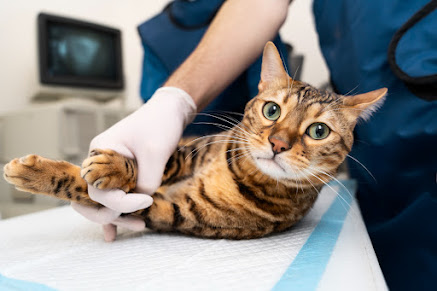Yawning in Dogs: Decoding the Meaning Behind their Pet-induced Yawns
If you're a dog lover, you've probably experienced the heartwarming moment when your furry friend yawns after you give them some love and affection. You may have wondered why they do it. Is it a sign of boredom, relaxation, or something else entirely? In this article, we'll explore the fascinating world of canine behavior and delve into the reasons why dogs yawn when you pet them.
Yawning: A Multi-faceted Behavior:
Yawning is a common behavior observed in many species, including humans and animals. While it is often associated with tiredness or boredom, the reasons behind yawning in dogs go beyond these simple explanations. Dogs yawn for a variety of reasons, and understanding these motives can provide valuable insight into their emotional state and overall well-being.
Communication and Social Signals:
Dogs are highly social animals, and they utilize a wide range of communication signals to convey their emotions and intentions. Yawning serves as one such signal. When you pet your dog, they may yawn to communicate a sense of relaxation and contentment. It can be their way of showing trust and comfort in your presence, akin to a sigh of relief. Yawning can also be a subtle form of communication to signal that they are not a threat and wish to maintain a peaceful interaction.
Stress and Anxiety Relief:
Yawning in dogs can also be a response to stress or anxiety. Similar to humans, dogs may yawn as a way to alleviate tension or calm themselves down. When you pet your dog, especially in situations that they find overwhelming or unfamiliar, yawning can act as a self-soothing mechanism. It helps them cope with stressful stimuli and regain a sense of equilibrium.
Empathy and Contagious Yawning:
Have you ever noticed that yawning seems contagious? Dogs are susceptible to contagious yawning, just like humans. If you yawn in the presence of your dog, there is a good chance that they will yawn in response. Contagious yawning is thought to be linked to empathy and social bonding. When your dog yawns after you do, it can be a sign of their emotional connection with you, reflecting their ability to understand and empathize with your state of mind.
Cognitive Dissonance and Conflict Resolution:
Dogs, like any living beings, can experience cognitive dissonance when faced with conflicting emotions or desires. For example, if a dog is simultaneously excited and apprehensive, it may lead to cognitive conflict. Yawning can serve as a coping mechanism during such situations, helping dogs regulate their emotions and find a resolution. Petting your dog can trigger a mix of positive and potentially conflicting emotions, and yawning can be a way for them to process and reconcile these internal conflicts.
Conclusion:
Yawning in dogs when you pet them is a fascinating behavior that serves various purposes. It is a form of communication, indicating relaxation, trust, and contentment. Additionally, yawning can act as a stress-relieving mechanism, allowing dogs to cope with anxiety and find comfort. Contagious yawning showcases the empathetic connection dogs can have with their human companions. Lastly, yawning can help dogs resolve cognitive conflicts arising from conflicting emotions. Understanding these different aspects of yawning contributes to a deeper appreciation of our canine friends and enhances our ability to interpret their emotional well-being.
The next time you pet your dog and witness a yawn, remember that it is more than just a reflex. It is a window into their emotional world, a silent conversation that speaks volumes about the bond you share.





